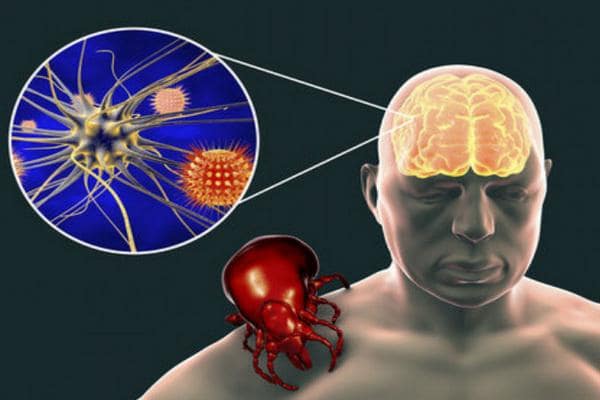Зміст
In addition to Lyme disease, tick-borne encephalitis is one of the most common diseases caused by tick bites. Although you can be vaccinated against this, the number of people infected is growing every year. As if this was not enough, the treatment is complex and lasts even a year, moreover, it does not protect against dangerous complications. Some patients never fully recover – they struggle with chronic headaches, depression, and even paresis of the limbs. Check what tick-borne encephalitis is, what are the first signs of infection and how to treat this dangerous disease.

What is tick-borne encephalitis?
Tick-borne encephalitis is a disease caused by Flavius, which belongs to the same virus family, responsible for hepatitis C, yellow fever or dengue. To get sick, you need an injection of a tiny tick larva. Virus carriers are also deer, roe deer, hares, birds and rodents, as well as domestic animals such as sheep or goats. Therefore, infection can also occur with the use of unpasteurized milk, but this is very rare. The virus infects the central nervous system – the brain. It can also cause fatal complications.
Tick-borne encephalitis symptoms

The incubation period of the virus lasts from 2 to 28 days. During this time, the virus multiplies in the body – first at the site of the tick, and then begins to develop in nearby lymph nodes and organs. The first symptoms usually appear a week after the bite of an arachnid and resemble the flu. Headache, joint and muscle pain, fever, chills, general malaise and weakness, nausea and lack of appetite are characteristic. They persist for a week, so most people are convinced that they were dealing with a simple infection. Unfortunately, during this time, the virus penetrates the central nervous system. Within 20 days after the first symptoms appear, symptoms of the second phase of the disease appear. They have a much more cruel move. Patients struggle with very high fever, vomiting and neck pain.
Tick-borne encephalitis complications

Tick-borne encephalitis can become a serious illness, depending on the reaction of the body. The most common is meningitis, which is the easiest type of disease. Unfortunately, complications cause asymmetric paresis of the limbs, muscle weakness or atrophy, as well as severe pain in the joints and muscles, as well as tingling and numbness on the skin. If the virus infects the brain, depression, impaired consciousness, vision problems, and even suicidal thoughts are common. Sometimes symptoms remain for life, despite treatment. Then patients have to deal with regular headaches, limb paresis, persistent weakness or muscle wasting, and depression.
Tick-borne encephalitis treatment
The treatment of tick-borne encephalitis is complex and lengthy – it lasts from several months to a year. Because of the risk of serious complications or even death, hospitalization is often required. Symptomatic therapy – the patient is given strong painkillers and anti-inflammatory drugs, as well as drugs that strengthen the nervous system. The most effective protection against tick-borne encephalitis is a three-dose vaccine








